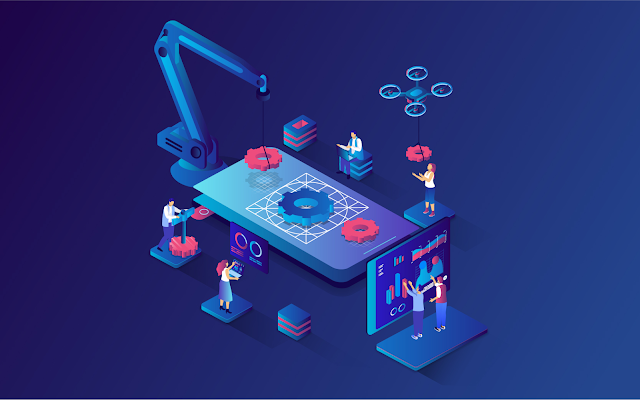Mobile Application Development: A Detailed Guide for 2023
The popularity of smartphones has reached a whopping 78% of the world's population. Imagine the enormous market potential for all businesses you can tap by developing a mobile application.
“As per How
Many People Have Smartphones? [Apr 2022 Update] | Oberlo, Reports estimate that the number of
global smartphone users will continue to increase and hit 4.3 billion by 2023.
Given an expected global population of eight billion by then, that means that
the smartphone penetration rate in 2023 will be at 53.8 percent.”
Mobile applications like web apps are developed for
operating systems like iOS and Android. Apps deliver an improved user
experience compared to mobile web browsing utilizing smartphones' built-in
elements. The mobile app development process is based on the specific
requirement an entity wants to cater to for creating a broad spectrum of types,
including gaming apps, music apps, social media apps, and more.
Before creating an app, you need to understand the app
development process.
Mobile App Development: What is it?
The development of a digital interface that can be
accessed and operated using a smartphone, tablet and other handheld devices is
called mobile app development. An app can use the hardware features of such
devices as GPS, camera, Bluetooth, microphone, etc.
Process of Mobile App Development
In simpler words, we can segment the mobile app
development process into the following steps.
1.
Redefining ideas and developing new strategies
The first step is to define the concept behind
creating a mobile app. Ask questions related to app goals, solutions given by
an app to users, features included in the design, budget, etc. It will help to
focus on developing a proper strategy to follow for the mobile app development
process.
2.
Market research
Research the market well to find the competitors and
your competitive edge based on the business idea you want to cater to via a mobile
app development process. Profound market research will
also reveal the target audience, their online behaviour, features that help to
stand out, the best platform to develop and launch a mobile app, etc.
3.
User interface (UI) and user experience (UX)
Creating UI/UX architecture is, so far, the most
crucial part of this process. The UI of an app decides the UX. Hence, you will
need a proper roadmap to develop the architecture of a mobile app. Seamless
navigation will need well-defined features and UI design.
4.
App development
Once the roadmap gets decided, focus on choosing the
development method and hire an experienced mobile app
development company. Establish a timeline along with a set of goals and
milestones to accomplish. Focus on the most popular operating systems used
worldwide to advance the app development part.
5.
Testing
Make sure you follow a comprehensive process for
quality assurance. Test the app for all the aimed operating systems and find
the drawbacks. Running tests will reveal hidden issues that need to be fixed
right away.
Best Mobile App Development Platforms
Here is a list of the most preferred app development
platforms you can go with.
1.
Microsoft Xamarin
It is an open-source framework used to develop apps
for Android, Windows, and iOS platforms. It uses .NET and C# as the primary
coding language for cross-platform apps.
2.
Flutter
It is also an open-source framework created by Google
and launched in 2017. Its codebase is written in Dart, C, and C++. You can also
use it for developing apps for Android, Windows, Linux, iOS, etc.
3.
BuildFire
This framework is considered one of the most powerful
no-code app platforms for developing a mobile app. Users with no technical
knowledge or coding experience can use it to create an app using its limitless
functionality. Also, from this app builder, adding functionality is as easy as
installing plugins from its component marketplace.
Types of Mobile Apps
·
Native mobile applications
– Typically, such apps can work without the internet and are downloaded from
the app stores.
·
Cross-platform native apps – When the same code
is compatible with all mobile operating systems, such apps are called
cross-platform native apps.
·
Hybrid mobile apps – These apps are more
user-friendly than cross-platform apps and can be produced faster.
·
Progressive web apps –
These apps are delivered through web browsers and do not need installation. The
UI and UX are pretty similar to the mobile apps.
What to Choose?
The pro tip to avoid confusion is to compare the
advantages and disadvantages of all the app forms. The best way to do it is to
outsource the entire process to a highly experienced mobile app development company.
A team will be assigned to offer constant support for
proper decision-making. Learn from the top professionals and choose the best
options suitable to your need to develop an application. Prioritize your requirements
and choose the best options accordingly.
Contact us now to chat with one of our app development experts.




Comments
Post a Comment